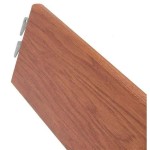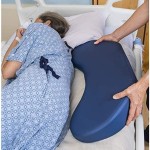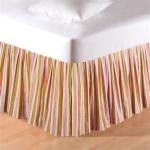When to Move Out of a Crib Into a Bed
The transition from a crib to a bed is a significant milestone in a child’s development, marking a step towards independence and a larger sense of personal space. While there’s no universal “right” time for this shift, understanding the factors that influence it can help parents make an informed decision for their individual child.
Physical Development and Safety
One of the most crucial factors to consider is the child’s physical development and safety. Cribs are designed with safety features to protect infants and toddlers, such as high sides and slats that prevent falls and entrapment. As children grow taller and more mobile, the risk of these hazards increases. The American Academy of Pediatrics (AAP) recommends keeping children in a crib until they reach the height of 35 inches or the age of two years, whichever comes first. Once a child can climb out of the crib, it’s time to consider transitioning to a bed.
However, it’s essential to note that while a child may reach the height or age threshold, they may not yet be developmentally ready for a bed. Consider factors like the child’s climbing skills, their ability to understand and follow safety rules, and their sleep habits. If a child is a frequent climber, has trouble falling asleep, or has a history of sleepwalking, delaying the transition may be beneficial.
Behavioral Readiness and Independence
Beyond physical development, it’s important to assess the child’s behavioral readiness and their level of independence. Are they showing signs of desiring more autonomy? Do they express a desire for a bigger bed? Are they able to understand and follow simple instructions? These are all signs that they may be ready for a bed.
The transition can be a positive experience for the child if they feel involved and empowered in the process. Allow them to participate in choosing bedding and decor, and make it a fun and exciting event. Establishing consistent bedtime routines and clear boundaries will be crucial for ensuring smooth sleep transitions.
Room Setup and Safety Considerations
Once the decision to transition is made, creating a safe and supportive environment in the child’s bedroom is vital. Remove any furniture or objects that could pose a tripping hazard or be used for climbing out of bed. Install safety gates on doors and stairs to prevent falls or wandering. Consider using a bed rail or a room divider to provide a sense of security and prevent the child from rolling out of bed.
The chosen bed should be the appropriate size for the child and provide a comfortable and safe sleeping surface. Consider the height of the bed and the risk of falls, especially if the child is a heavy sleeper or a restless mover. A mattress that is firm and supportive will provide the best sleep quality and prevent discomfort or back pain.
Transitioning from a crib to a bed can be a positive and empowering experience for both the child and the parent. By considering the physical, behavioral, and safety factors involved, parents can make an informed decision that best suits their child’s individual needs and supports their development.

When To Transition From A Crib Toddler Bed

How To Move Your Child From Crib Toddler Bed Safely

10 Best Tips For Transitioning From Crib To Bed Busy Toddler

When Should You Remove The Sides From Your Toddler S Cot Bed Mummy Bubble

When Should Your Baby Make The Transition From Crib To Toddler Bed Parachute Blog

Moving Twins To Toddler Beds Ct Mommy Blog

How To Move From A Cot Bed Toddler Cuckooland

Top 5 Signs Your Toddler Is Ready To Move A Big Kid Bed Urban Infant

When To Transition Toddler Bed And How Cleveland Clinic

5 Signs Your Toddler Is Ready To Move A Bed Cafemom Com







